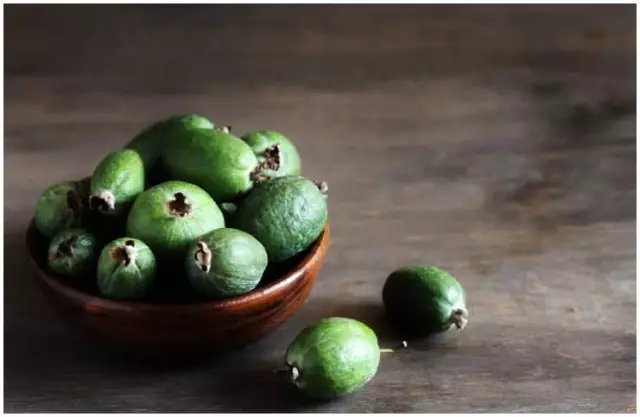- Author Rachel Wainwright [email protected].
- Public 2023-12-15 07:39.
- Last modified 2025-11-02 20:14.
Corn
Corn is an annual plant from the family of cereals, which is subdivided into 9 types: flint, sugar, bursting, dentate, semi-dentate, mealy, starchy-sugar, waxy and filmy.
The ratio of BJU in the product

Source: depositphotos.com How to burn 365 kcal?
| Walking | 91 minutes |
| Jogging | 41 minutes |
| Swimming | 30 minutes. |
| A bike | 52 minutes |
| Aerobics | 73 minutes |
| Household chores | 122 minutes |
Biological features and origin of the plant
Corn is a tall annual plant, which has a height of up to 6 m, a developed root system and forms supporting roots on the stems that prevent the plant from falling.
Corn leaves are large, up to 1 meter long and up to 10 cm wide. The male flowers of the plant are collected in panicles, and the female flowers are collected on the cob. On one plant there are 2-3 ears, the length of which is from 5 to 40 cm. The shape of the corn grain is different, it can be elongated, like in wheat, or cubic, like in other cereals. Each ear contains up to 700 grains, the size and shape of which are different for different varieties of corn.
The cultivated plant corn was first grown in Mexico about 7 thousand years ago. In the state of Oaxaca, the first grains of corn were found, which date back to 2700 BC. At that time, corn cobs were several times smaller.
Modern scientists have several versions of the origin of this plant:
- corn is a breeding plant that was developed from wild corn in Mexico and Central America;
- corn is a plant that has been obtained by hybridizing wild corn with other types of cereals;
- Mexican tribes bred this cultivated plant for several hundred years;
- corn originated as a hybrid of wild corn with a closely related plant such as Tripsacum.
Scientists have established that the benefits of corn are high, and it played an important role in the development of North and South America, since many American tribes owe their flourishing to this cereal plant.
Calorie content of corn
The benefits of corn are high, since this plant is the source of a whole range of useful elements. It contains starch, vitamins of the PP, B and C groups, as well as such useful substances as magnesium, phosphorus, copper, nickel and potassium.
Corn cobs contain up to 3% fatty oil and up to 0.5% essential oil, as well as ascorbic acid, stigmastirol, saponins, glycoside-like substances and pantothenic acid.
The calorie content of corn and its grains is different. There are about 69 kcal in one glass of corn kernels. and 2 g of fiber, and in boiled grains - 88 kcal. and 2.3 g of fiber, as well as vitamin E, ascorbic and folic acid.
The calorie content of corn per ear is 123 kcal, as well as 4 g of proteins, 2 g of fat and 21.5 g of carbohydrates.
Useful properties of corn
Since the beginning of its existence in Latin America, corn has been used for medicinal purposes. The beneficial properties of corn have been proven by various scientific studies.
Corn silk is dried at a temperature of 40 degrees and is used as a medicine that contains ascorbic acid, essential oil, resins, vitamin K, and also has anti-inflammatory, diuretic and choleretic properties.
International medical research has revealed the high health properties of corn and its extract. In Russia and other European countries, liquid corn extract is used to treat hepatitis, cholangitis, cholecystitis, urolithiasis, and as a hemostatic drug.
The corn germ contains more than 50% fatty oil, from which the extract is created, used as a dietary agent and for the prevention of atherosclerosis, diabetes mellitus and the treatment of overweight.
Corn oil contains about 80% fatty acids and 1 g of phosphates. These components are useful substances for the regulation of metabolic processes in the human body, as well as for the normalization of cholesterol metabolism.
Corn oil is prescribed for people with atherosclerosis, prone to thrombosis and weakened immunity.
Cooking and eating
Corn has a high taste and great culinary potential. The ears of the plant are used for food, creating various dishes. Canned corn is used for first courses, salads and pizzas.
Various cereals, puddings, pancakes and other types of baked goods are made from corn flour. The high quality of the corn flour makes the baked goods crumbly and tasty. Corn kernels can be used as a side dish or as a stand-alone meal with various drinks and yoghurts.
In Moldavian cuisine, this plant became widespread in the early 17th century as food for the poor, and later all categories appreciated the benefits of corn. Currently, traditional Moldovan hominy is prepared from it, and is also used in soups, side dishes, cereals and confectionery.
Corn-based Argentina is used to prepare many national dishes, including tamales, locro and humita. In American culture, corn has gained widespread popularity as the main ingredient in popcorn and corn dog. In Mexico, the traditional national stuffed corn flatbread is prized.
In China, corn appeared in the 17th century, and they began to make flour from it, which is used for Chinese donuts and cakes. Such confectionery was especially loved by the Chinese emperors. Nowadays, salads, side dishes and baked goods are made from corn in China.

Contraindications to the use of corn
Scientific studies have found that a modified corn variety has a negative effect on the human body. Such a plant is protected from pests, but it contains a dangerous poison that not only kills harmful insects, but also negatively affects any living creatures. Currently, the genetically modified corn variety is banned in many countries around the world.
Eating popcorn and other corn fast foods can negatively affect people who are prone to obesity, allergies and metabolic disorders.
You should not use confectionery from this cereal plant while following the dietary menu and carrying out a general cleansing of the body.
YouTube video related to the article:
Found a mistake in the text? Select it and press Ctrl + Enter.






